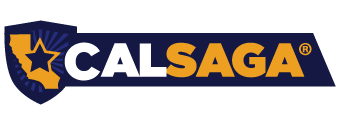TOP 3 ACTIONS SECURITY LEADERS SHOULD TAKE TO CLOSE OUT THE YEAR STRONG: WHY THE END OF THE YEAR MATTERS
Anne Laguzza, The Works Consulting, CALSAGA Network Partner
Many leaders coast into the year-end, thinking about holiday schedules and payroll deadlines. But strong leaders use this time strategically to motivate their teams, solidify culture, and set the tone for the new year.
A well-executed year-end creates momentum and builds trust going into January. Think of this as your final lap of the year—how you finish matters.
Finish the year strong by taking these 3 actions and using our Year-End Closeout Checklist for Security Leaders. (Download our FREE checklist here.)
Action #1: Reflect and Recognize
People will work for a paycheck, but they’ll go above and beyond for a leader who sees and values them.
- Why it matters:
Security work is demanding and often thankless. Guards work long shifts, nights, holidays, and often face challenging situations with the public. Recognition builds morale and retention. - How to do it well:
- Hold short team huddles to reflect on big wins of the year (incidents handled well, client relationships strengthened, emergencies managed with professionalism).
- Give specific praise—call out individual contributions, not just a blanket “good job.”
- Consider small tokens of appreciation: handwritten notes, gift cards, or a personalized acknowledgment in front of peers.
- Make sure supervisors are equipped to cascade recognition down to every shift.
- Anne Tip: Recognition doesn’t have to be expensive—but it must be personal and timely to matter.
Action #2: Reset Expectations and Standards
The standards you set now will carry into the new year.
- Why it matters:
Year-end often exposes performance drift—attendance issues, cutting corners, or communication breakdowns. Resetting expectations aligns the team and reduces January headaches. - How to do it well:
- Host a brief, high-energy “Year-End Reset” meeting with each shift or post.
- Revisit the core priorities: client service, safety protocols, professionalism, and communication.
- Be clear about non-negotiables going into the next year (e.g. punctuality, incident reporting).
- Pair it with encouragement: focus on where you’re going, not just what went wrong.
- Anne Tip: Make this an interactive conversation—ask your team where they see opportunities to improve, and listen to their feedback.
Action #3: Launch Into the New Year With Vision
Leaders don’t just wrap up the year—they ignite the next one.
- Why it matters:
Security officers need to know they’re part of something bigger than just shifts and schedules. Ending the year with a clear, inspiring vision helps retain talent and engage your best performers. - How to do it well:
- Share one clear, motivating message about where the company or team is headed in the new year.
- Example: “In 2026, our focus is building stronger client relationships by enhancing customer service skills.”
- Encourage each security officer to set one professional growth goal, whether it’s leadership skills, certifications, or mastering a new post.
- Follow up in January to show you mean it.
- Anne Tip: People commit to what they co-create. Invite your team to share ideas for improvement and innovation.
Finish Strong, Start Stronger
How you finish out this year sets the tone for the next one.
- Recognition shows your team they matter.
- Resetting expectations creates clarity.
- Casting a vision builds excitement.
As a security leader, you don’t just manage shifts—you shape culture and performance.
Make the final weeks count, and you’ll launch into the new year with a team that’s engaged, motivated, and ready to succeed.
 Anne Laguzza is the CEO of The Works Consulting, a CALSAGA Network Partner. As a seasoned business executive with human resources management, leadership development, and performance coaching experience, Anne works with clients from a variety of industries to develop better systems, maximize employee productivity, and enable management to focus on business growth. For more information, check out theworksconsulting.com or email anne@theworksconsulting.com. You can also find Anne on Instagram and LinkedIn.
Anne Laguzza is the CEO of The Works Consulting, a CALSAGA Network Partner. As a seasoned business executive with human resources management, leadership development, and performance coaching experience, Anne works with clients from a variety of industries to develop better systems, maximize employee productivity, and enable management to focus on business growth. For more information, check out theworksconsulting.com or email anne@theworksconsulting.com. You can also find Anne on Instagram and LinkedIn.







